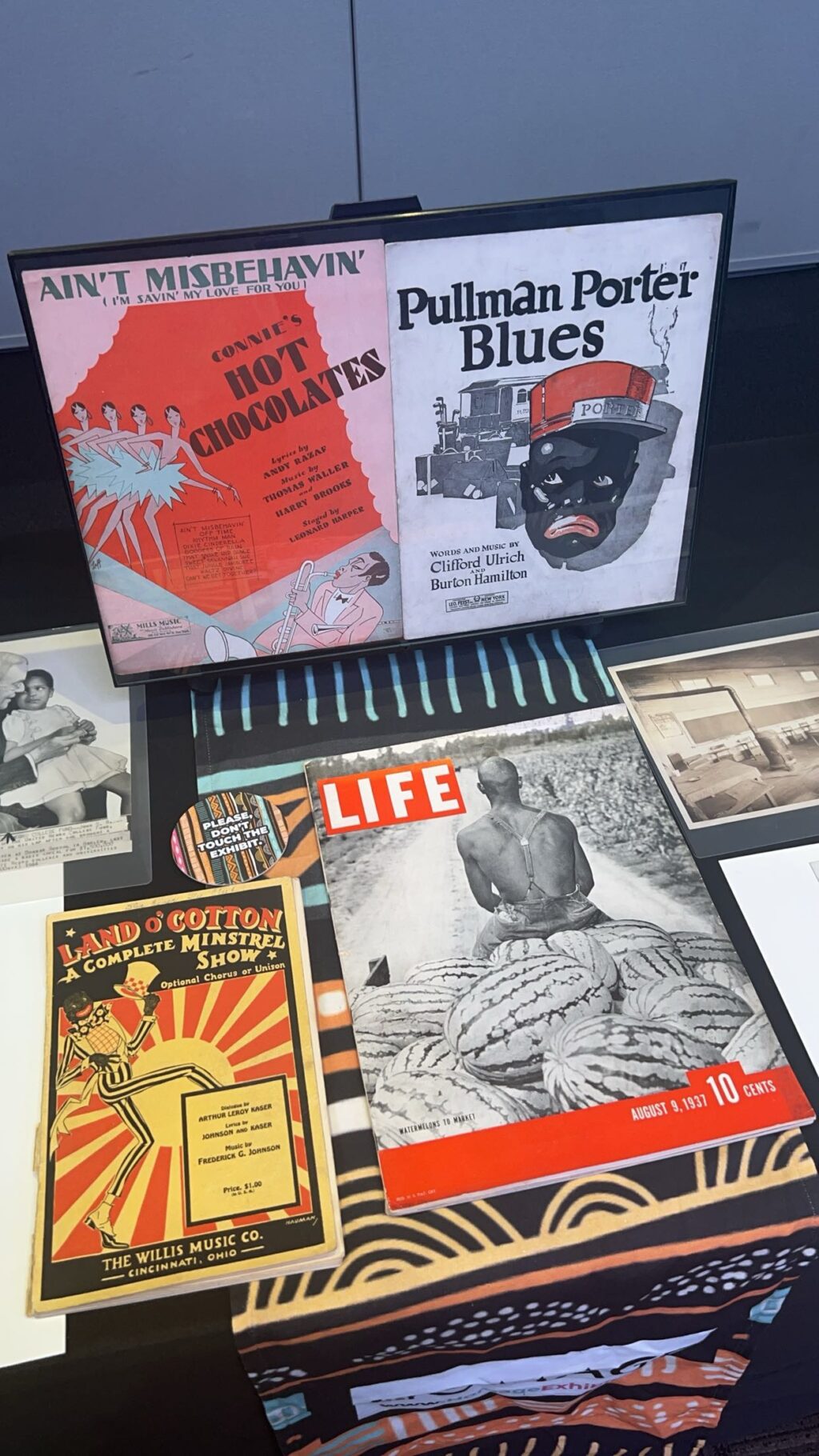Jeff Igbokwe
The travelling Black history museum, Homage, on Feb 19 with their exhibit, Black Life History and Culture was displayed in honour of Black history Month. The museum was open to the public. The Homage Exhibit focuses on African American history and culture, aiming to highlight the Black experience in the United States from the era of slavery to contemporary times.
The Homage Exhibit features over 650 select items from the private collection of Charlotte, North Carolina residents Nia and Morris McAdoo. Each artifact included in the exhibition represented an icon, cultural phenomenon, or significant moment in African American history, including works from Booker T. Washington, Fredrick Douglass and Shirley Chisholm, as well as various artifacts from the civil rights movement. Morris McAdoo, who curated the exhibit at West Georgia, explained how the exhibit highlights the struggles in progression African Americans made throughout the 20th century to create more opportunities for themselves.
“If you look through everything on display, you can recognise the progress each person had made,” said McAdoo. “If you look at some of the accomplishments of anyone, for example, what a busman porter would have suffered while doing his job. Seeing that that was what they did, and they did it so well, the next step after that would be making sure their children went to school. We have documentation where their children were admitted into colleges and gain a degree, therefore doing more than what their parents did.
“When you see this, you can see the progression and while it wasn’t overnight, you see that it was very intensive work where everyone did their part,” continued McAdoo. “Everyone recognised that they could use education and experience as a way to rise up in society. If you look, we start with artefacts about slavery, and end off with documentation about President Obama and the Supreme Court of Justice. When you see that, it shows how long it took, and the difficulties in getting the opportunity where we could represent in the Supreme Court and where we could be President.”
While the exhibition does include a wide range of topics, from sports and music to the arts and literature. It includes memorabilia from the lives of Martin Luther King Jr, Malcom X and Angela Davis, the inclusion of certain stories that don’t receive as much attention from mainstream historical narratives are just as important as the well-known events. This includes the story of Medgar Evers.
“Evers was a civil rights worker in Mississippi who probably worked as an attorney,” said McAdoo. “He was someone who was shot and killed at an early age (37), like how Dr King was shot and killed, but King was able to make a lot more accomplishments nationally. Medgar Evers was someone that deep in the South. I think that if you look more and more into it, he did so much to support the Civil Rights Movement. He did so much at such a young age, but you don’t hear of it as much as a Malcolm, a Martin or a Thurgood.”
While The Homage Exhibit does serve as a commemoration of the resilience and achievements of African Americans, it is also a way that institutions such as the University of West Georgia are able to enhance the teaching of Black history, serving as a reminder that this era of American History is quite recent. While we may not have lived through it ourselves, we are still able to benefit from the fight of African Americans in the past.
“The reason why we do this exhibition is because it allows people to see things in real time,” said McAdoo. “You’re seeing a newspaper ad of exactly what they were reporting at the time, and now you have the ability yourself to look back in time and have a different meaning than someone else. Hopefully, when you see the progression, it could help assist in changing your perspective.
“Maybe you weren’t aware of how offensive certain depictions of Black people were, or how in certain places discrimination was essentially legal,” continued McAdoo. “I think that as long as we continue our presence, and make sure that we recognise the history, then we can recognise that it is very easy for things to go back. With Civil Rights, we’re not talking 200-300 years in the past, we’re talking about things that have happened in life. It is important for us to remember some of the steps, fights and battles that we’ve had when it comes to equality here in America.” More information about the Homage Exhibit can be found on their website: https://www.homageexhibit.com/
You may also like
-
3rd Annual At the Core Conference Recognizes Freshmen and Sophomore Undergraduate Research Across Disciplines
-
Greek Week 2024: Teams Strive to Have The Odds Ever in Their Favor
-
Chi Omega Raises Money For The Make-A-Wish Foundation
-
West Georgia Outdoors Lake Day Gives Students a Chance to Destress Before Finals
-
“The Toxic Avenger” Closes UWG Theatre’s “Resistance is Futile” Season
